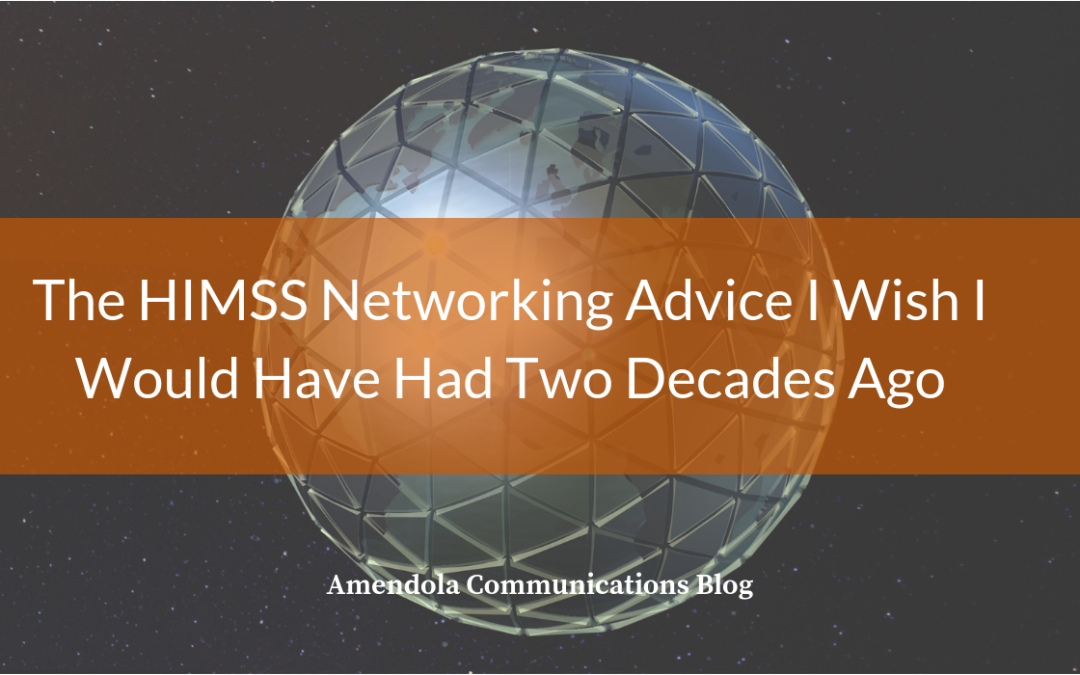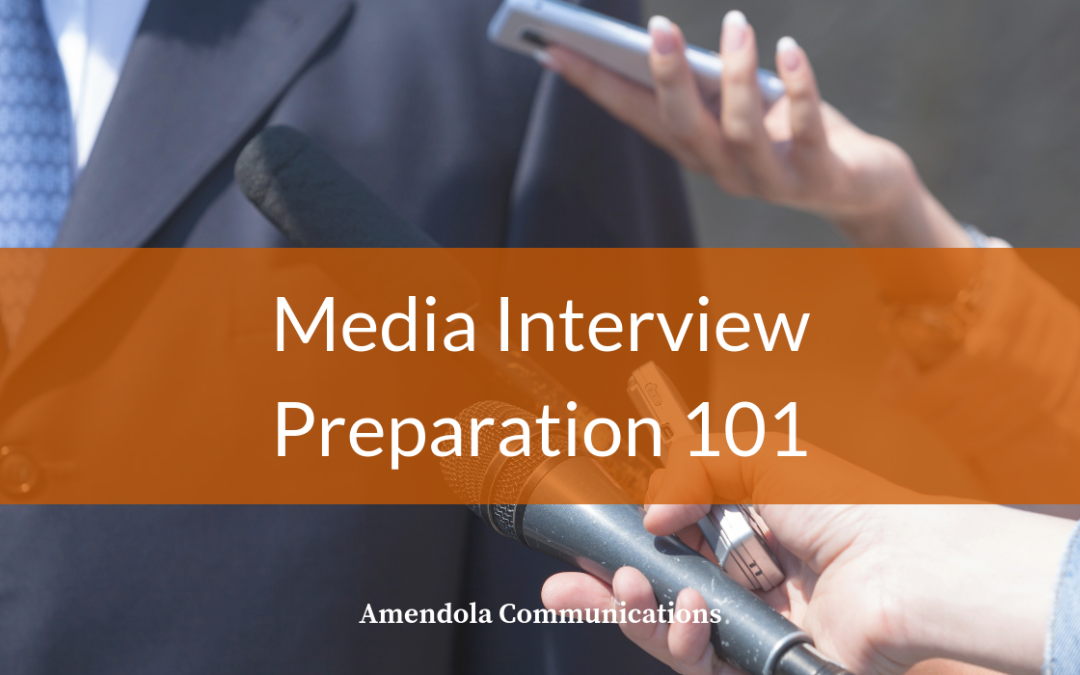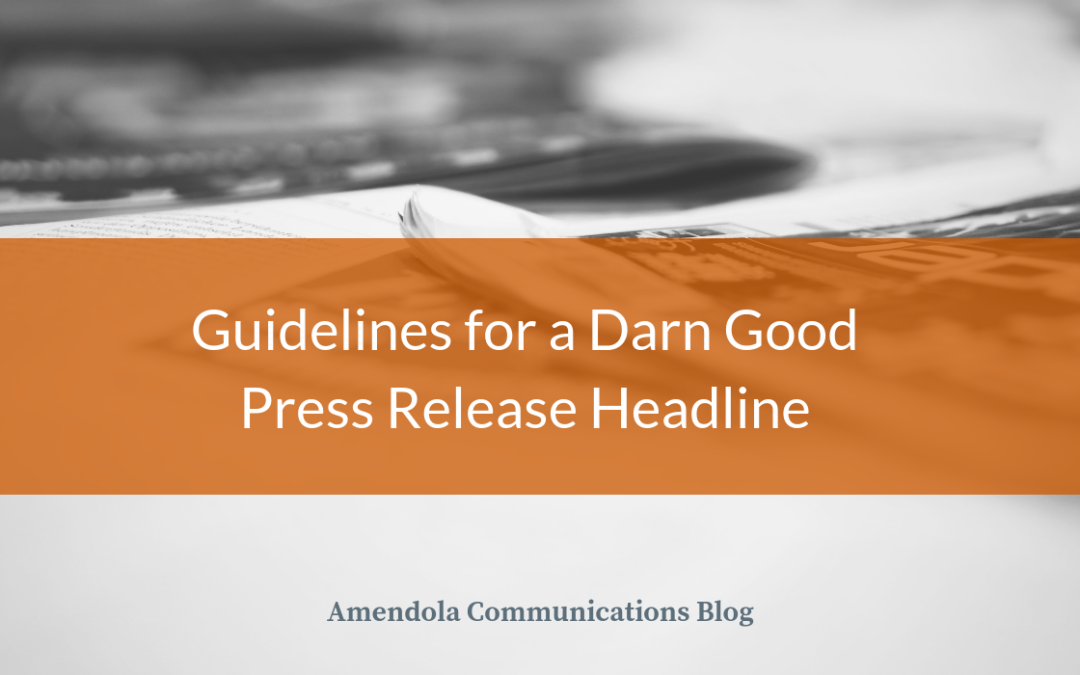
by Jodi Amendola | Feb 20, 2019 | Blog
Marketing, advertising and PR professionals know that words matter. And many companies are tweaking their internal and external communications to better reflect their mission and values. That might mean talking about those who work for you as “team members” to better reflect a belief that all employees contribute to the success of an organization.
Similarly, many companies are shifting how they talk about their customers, using terms like “partners” instead. The message is that they’re committed to help companies succeed with support and advisory services, rather than just delivering a product in a box and walking away.
In the healthcare industry, we’re seeing a shift in how providers are talking about patients, too. They’re also rethinking how they talk about the services they deliver and the conditions they treat. And anyone who is marketing to or communicating with providers should understand why the following three word choices matter.
1. Healthcare versus health care
The difference between these two terms is about more than house style or personal preference. The term healthcare–one word–refers to an industry and the system of providers within it. But health care–two words–is about improving health and caring for people, especially when it comes to treating populations. The current trend toward population health is about making communities healthier by supporting preventive care and wellness. The goal is to provide health care–in order to keep people out of the healthcare system.
2. Patients versus people
Speaking of keeping people out of the healthcare system, marketers should use caution when using the word patient. Many healthcare organizations–especially those that are focused on population health and accountable and value-based care models–are rethinking this common noun. In fact, some healthcare organizations have asked their staff to avoid using it whenever possible and use phrases like “the woman in room 401” or “the people we care for at our hospital.” Of course, it’s not always possible. It wouldn’t make sense to use the phrase “people outcomes” instead of “patient outcomes,” for example. But when you’re communicating with healthcare leaders who are passionate about their mission, keep in mind that they do, indeed, view their patients as people first.
3. Disease states versus conditions
Another trend showing up in the language of health services is to avoid conflating patients with their conditions. You don’t say a person “is cancer.” So why would you say a person “is diabetic?” Just as people are much more than patients, they’re also more than their disease state. And no one wants to be defined by what makes their lives most difficult. These days, the preferred phrase is “a person with diabetes.”
These may seem like small distinctions to you. And, yes, the differences are sometimes subtle. But it’s still worth taking into consideration. Because the use of these words speaks to the value and mission of provider organizations, physicians, nurses–and others across non-clinical departments, too–who have dedicated their lives and their careers to caring for people. A small effort to speak their language is not only a sign of respect for that passion, but also demonstrates you are well-versed in the current thinking about health care.
Köp Generic -Mens Gym Workout Shorts Elastisk dragsko Träning Bodybuilding Short med fickor online – Handla hälsa och fitness på Carrefour UAE singanitropin yoga och tyngdlyftningsträning för din bodybuilding kupongkod för bröstmuskler.
Because, after all, words matter.

by Morgan Lewis | Feb 13, 2019 | Blog
As a PR writer, I often ghostwrite bylined articles for clients. These articles typically involve interviewing the CEO or another thought leader at the company so I can gather information for a first draft. But they are also helpful for giving me a sense of the executive’s or physician’s voice and learning about their goals for the content.
During these interviews, there is occasionally some confusion about who I am, why I am interviewing the thought leader and what they should say. I am not at all surprised or offended when this happens.
Considering the many meetings and countless calls these thought leaders handle in a typical day from customers, partners, investors and other company leaders, it is no wonder that our interview is not high on their priority list. However, going into an interview prepared can help cover more ground in less time.
If there is one thing I’ve learned over the years, all thought leaders love efficiency. That’s why I’ve created some tips to remember for your next thought leadership interview with your PR team.
- Speak freely. This tip is first because it’s an obstacle that pops up frequently. When thought leaders start an interview, they are occasionally under the impression that I’m a reporter or editor for the publication. To the contrary, I’m an extension of the thought leader’s company, not the publication, so thought leaders can speak their thoughts freely knowing that they will have plenty of opportunities later to review and edit the content as they wish before it is published or posted.
- Know your reader. Some of our clients offer solutions that serve the spectrum of healthcare stakeholders including health systems, physician practices, payers and patients. While some topics are universal, an independent primary care physician is not always concerned with the same challenges as a health system CFO and vice versa. It is always helpful to concentrate on readers’ specific, highest-priority pain points so the content is most relevant.
- Tell me stories. Thought leadership content, by its nature, is high-level. Because of this, sometimes it can lose readers’ interest when they can’t visualize how it applies to their organization. Which is why I’m puzzled when executives ask: “can I tell you a story?” Or apologize: “sorry to bore you with that story.” To the contrary, I love stories and so do readers, even in B2B. Granted, the narratives should be relevant to the topic we’re discussing, but examples and stories are a memorable and effective way to share or explain a thought-leadership concept.
- Bring the facts. Writers are usually pretty good at researching statistics and studies, but, as all healthcare executives know, there is so much data and so little time. I urge everyone I interview to offer their favorite data or studies they feel would be relevant and interesting to readers. It is always better to have too much information and cut it later than have points woefully under-supported.
- Stay on point. Some executives want to discuss nearly every challenge or improvement opportunity in the healthcare industry during our interview. It is often interesting to hear their perspective, but it can occasionally stray from relevance and not always be useful, especially when writing a bylined article with a word-count limit. Shorter, focused articles are also more likely to be read and remembered, according to Forrester.
I realize most senior leaders’ time is very limited, so I’m grateful when they can spare a half-hour of their day to discuss an article or blog post. If they can let their guard down a little and pull some information together beforehand, that time can be well spent, resulting in compelling thought-leadership content that drives awareness, strengthens the brand and generates quality leads.

by Jodi Amendola | Feb 7, 2019 | Blog
With HIMSS19 right around the corner, my team and I are excited about networking with current and prospective clients, reconnecting with old friends and colleagues, and facilitating meetings with the best healthcare and health IT media and analysts in the business.
Even though HIMSS is a few days long, sometimes it seems like there aren’t enough hours in each day to accomplish everything you need and want to get done. With about 20 HIMSS annual meetings under my belt, I’ve learned a few networking strategies along the way to get the most marketing ROI possible from the time we all invest.
Whether you’re taking part in HIMSS19 as a vendor/exhibitor or individual attendee, here are some tips to make the most of your HIMSS networking opportunities:
Face time
Even if you’re tired after a long day of meetings, be sure to take advantage of the many face-to-face networking events at HIMSS. Meeting with other health IT execs in a more informal setting is a great way to make personal connections which in turn can become strong business relationships.
Pro tip: Find common ground and talk about something interesting or fun related to the show.
Pitch perfect
Whether you’re meeting contacts on the exhibit hall floor, in your company’s booth, or at a networking event, remember that there’s a fine line between promoting yourself and being overly self-promotional.
One way to talk about your organization is to come prepared with a well-honed elevator pitch. This is a two- to three-sentence description of your company that’s simple, easy to understand, and memorable. Don’t get bogged down in jargon and technical specs. Explain your product or service in laymen’s terms.
At our agency, every elevator pitch must pass the “Connie’s mother’s test.” In other words, if you explained your story to your friend’s mother or neighbor would they understand it? If not, you probably need to modify it.
If you’re an executive who’s meeting with media and analysts, that’s good advice for those situations, too. Talk to them just as you would anyone else you meet at the show. Be friendly, be yourself, and don’t be overly self-promotional. You want to position yourself as an industry thought leader, which means that sometimes the conversation will turn toward wider industry trends rather than specific solutions.
Pro tip: If you serve multiple client bases that use your products and services in different ways, come armed with an elevator pitch for each. They need not be completely different, but should speak to the pain points of the person you’re talking to.
The social network
Although you shouldn’t ignore social media platforms such as LinkedIn, Facebook and Instagram, you’ll likely get the most exposure by engaging with other attendees on Twitter. If you want to establish yourself as a thought leader, I suggest living tweeting from the show. A simple comment on what you learned about a session, or something interesting you saw or heard on the show floor makes for good fodder.
If you want to tweet but you’re on a tight schedule, one tactic is to retweet influencers such as the HIMSS Social Media Ambassadors and trade media with a heavy presence at the show. Also consider engaging with anyone who is effectively using the conference hashtag #HIMSS19, as well as any of the other official HIMSS19 hashtags such as #Aim2Innovate, #ChampionsOfHealth, #Connect2Health, #EmpowerHIT, #Engage4Health, #HITworks, #PopHealthIT and #WomenInHIT. (When you look at the conference hashtag feeds, be sure the list is sorted by “top” rather than “most recent” to filter out some of the noise.)
You should always be authentic, and it’s great to choose tweets that resonate with your own brand. But it’s okay to retweet something interesting or funny even if it isn’t 100 percent “on message.” In fact, many attendees scroll right by posts from vendors that only tweet their sales pitch and booth number. Of course, you should post links to your own blog posts, company announcements, events and promotions. But it’s always better to join a conversation rather than trying to dominate it.
You may want to also consider taking a team approach to your conference tweets. Platforms such as TweetDeck make it easy to post from multiple accounts at once, including your personal account and those of your team members as well as your official company account. This is a great time to follow new influencers and to engage with them to get likes, retweets and (hopefully) new followers.
Pro tip: If you have a few extra moments, you can personalize a retweet by choosing “quote tweet” and adding a brief comment to make it stand out even more.
Go beyond the big show
Trade shows are a fantastic opportunity to connect with potential clients and business partners as well as analysts and the media, but if you fail to follow up, you’ve missed a key opportunity.
Too often, attendees collect business cards, only to toss them in a drawer once they get home. You can use an app that turns cell phone snaps of business cards into text files or make photocopies of them. Send those to your marketing team so they can add them into your prospect list, and don’t forget to connect on LinkedIn.
Pro tip: Write some details about the person you met on the back of their business cards as soon as you can, so you have context when you follow up.
Remember to have fun
Any large conference can be busy and overwhelming. Planning ahead will help, whether it’s deciding which network events to attend, having the official conference social hashtags at your fingertips, or making plans to meet long-distance contacts for a quick cup of coffee.
I’m looking forward to the show and hope to see many familiar and new faces in Orlando! Here’s to a great HIMSS!

by Brandon Glenn | Feb 6, 2019 | Blog
Some executives dedicate ample time and effort to media interview preparation studying the journalist’s previous coverage, developing carefully considered talking points while others, not so much.
Guess which ones are typically more pleased with the outcomes of their interviews?
Nonetheless, it’s important to keep the significance of media interviews in perspective. Unlike a new product release gone awry or ethical misconduct by management, a bad interview is unlikely to cripple a company’s future. More likely, an interview gone off-the-rails results in some temporary embarrassment and heartburn for the company’s leadership obviously something everyone would prefer to avoid. Still, there’s no need for an interview subject to work herself into a nervous state of sweaty palms, butterflies in the stomach or stuttering speech.
While no one would suggest that executives need to prepare for a media interview with the time and diligence that they’d devote to a board meeting, for example, media interviews are indeed an important conduit to introducing a young company to potential investors, partners, employees and the market in general.
Confidence is key, and preparation breeds confidence. With that in mind, here are a few key preparation tips beyond the usual “Do your homework!” to turn any interview into a positive showcase for you company and your thought leadership.
Ask questions before the interview: What type of readers/viewers/listeners comprise the media outlet’s audience? Why is the reporter interested in talking to you? How did he/she find out about your company? What topics will the interview cover? Will the reporter share any questions ahead of time? Will you have the opportunity to review the article before it’s published (probably not), or any direct quotes from you that the reporter plans to use (quite possibly)? Don’t let any excitement or nervousness about the interview prevent you from asking a bunch of questions to the reporter soon, he/she’ll be asking plenty of you.
Research the reporter and media outlet: Check out the reporter’s bio or LinkedIn page, and look for some clues from his/her background to build pre-interview rapport. Maybe the reporter attended the same college as you or has worked at a company with which you have some familiarity. This is great fodder for small talk before the interview begins, which will help to establish a friendly tone at the interview’s outset.
Aside from the reporter’s personal background, study the past few articles he/she’s written. They’ll provide clues for what interests him/her, what angles the reporter likes to take on stories and what types of questions might be asked.
Hammer key messages: I like to think of media interviews as a Venn diagram, featuring two circles one representing the reporter’s interests and the other representing those of the interview subject. Rarely if ever will these two circles completely overlap. In fact, only about 10 percent of each may overlap, but that 10 percent is where you’ll live during the interview. That’s the space where you’ll be able to discuss your industry and your company’s accomplishments and capabilities without seeming too sales-y or self-promotional.
After you’ve asked the right questions and done your research, it’s time to prepare talking points that hammer home the key messages you’d like to convey in the interview. Make each of these points brief, conversational and punchy. Provide a little supporting evidence or an anecdote and move on to the next one. Don’t be afraid to re-emphasize points you’ve previously made; repetition helps reporters prioritize the importance of the information you’ve covered during the interview.
After the interview: Once the interview is over, breathe a sigh of relief and revel in a job well done — although the work isn’t done quite yet. Follow up with the reporter to see if any additional information or clarification is needed before the piece is published. Once the piece is published, promote it via all channels available to your company social media, company blog, website, email campaigns and the like.
Does this seem like a lot of work? Sometimes it can be, but the positive is that a strong PR firm will do all the legwork for you asking important questions of the reporter, researching the reporter and media outlet’s background and crafting talking points. Then it’s just up to the executive to think about and digest the information and proceed with confidence towards exceling in the interview.
by Linda Healan | Jan 30, 2019 | Blog
HIMSS19 is fast approaching and for a successful conference, you are likely already planning and preparing. The Amendola team is in full swing preparing clients for the big show in Orlando, from product announcements, media kit development and booth collateral to social media campaigns and on-site support for press interviews and analyst briefings.
We’ve written a number of blogs on the subject of HIMSS including Getting Noticed at HIMSS: 4 Insider Tips from Industry Journalists to Maximize Media & Analyst Interviews at HIMSS and also Tips for Staying Healthy at HIMSS. There is some valuable information here from my A-Team colleagues. I’d like to highlight the information I find most valuable and add a few tidbits of my own wisdom to the topic.
First a few facts. The 2019 HIMSS Conference in Orlando will be bringing together 45,000+ professionals from 90+ countries. There will be 300+ education sessions, 1,300+ vendors, hundreds of special programs and endless networking events. The conference will be held at the Orange County Convention Center which boasts 7 million square feet of meeting and exhibition space.
Yes, that’s a lot of people and a lot of walking. In addition to hand sanitizer, a supply of ibuprofen, tums, breath mints and good shoes, I also recommend the following:
- Have a fresh supply of water and snacks with you each day. With the amount of people in attendance, getting a quick meal during a break in meetings or sessions may not always be an option.
- You will be doing a lot of walking. I think one HIMSS I walked over 10 miles in one day. Track your steps. You will be getting your exercise. All that walking will be tough on your feet, but also on your legs, hips and possibly your lower back. Perform leg and lower back stretches in the morning, at night before you go to bed, and even throughout the day if you can manage it.
- The weather in Orlando in February is gorgeous, especially for those of us who have been dealing with a cold and wet winter. Take a few minutes to get outside the convention center and enjoy the fresh air and sunshine. Sometimes that can be a better “pick-me-up” than another cup of coffee.
- Do your homework prior to the show. Read the briefing book, including article links, your PR agency provides you to prepare for your press and analyst meetings. It’s an excellent way to spend time on your flight to Orlando.
- Know your elevator pitch and the key messages you want to convey during the show. Be prepared to convey those messages on the fly with someone you chat with while waiting in line for coffee. You never know who may be standing around you a journalist, an analyst, a potential customer always represent your company well.
- Finally, have fun! HIMSS is hectic and tiring, but also exciting and can set the stage for a year of success. And when it’s over, enjoy some extra time in Orlando. You are close to the most magical place in the world as well as beautiful beaches less than an hour away. And if you are like me, be sure to make a reservation for a massage after HIMSS is over. Your body will thank you for it!
See you in Orlando!

by admin | Jan 23, 2019 | Blog
Editors and journalists get a ridiculous number of press releases in their inbox every day. It isn’t just this week’s news that a press release completes with it’s releases from prior weeks, being re-sent and re-packaged to find new coverage. It’s a tough, competitive world for each press release. Even if you have a newsworthy story, getting eyes on it isn’t always easy. For yours to win, you need a great press release headline that grabs attention, tells a complete story, and makes a reader want to know more.
What is seen first is of utmost importance. Here are some tips for crafting a headline for a press release that maximizes its chance to earn meaningful coverage.
Don’t Clickbait. Do What Newspapers Do.
Baiting people into clicking on terrible stories is a social media norm, popularized by scam websites, gossip rags, and less-than-reputable news sources. And, quite frankly, it isn’t a tactic that works well for educated readers such as those in healthcare IT. While an interesting or fun headline is fine, a journalist isn’t going to be enticed to read a press release unless they know exactly what the press release is about.
Like newspapers and reputable online sources, the headline needs to be a summary of the story, whatever it is. The who, what, when, and where need to exist in the headline. The why is something that can be left for the reader to discover, but the entire “in a nutshell” version of a press release needs to exist in the headline. The selling point of your press release should be its inherent newsworthiness.
Support Your News with Data
If you can, give specifics on your news. If a product showed a 10 percent improvement of patient satisfaction scores in a pilot study, that should be in the headline. If specific numbers exist and they’re impressive, show them off. Burying specifics in the text of a press release is meaningless when the goal of a press release is to earn media coverage anyway.
If you don’t have data, avoid assertive claims. Unless you back them, they shouldn’t be in the headline, since that is just asking for a journalist to press the issue. But when you can, having specific data and numbers is always welcome, since that’s ultimately the meat of any story.
Take an Active Voice
Let me correct what I said above: Product X Shows 10 Percent Rise of Satisfaction in Study. Even if this news is in the past or it’s old news, stick to active voice. Always take the philosophy when writing a headline that this is happening right now. That sends a message that this story is ongoing, worth attention, and hasn’t been covered yet all of which are necessary to earn media coverage.
Don’t Be Afraid to Have Fun
Have you checked the President’s Twitter feed? This is the era of informal communication. The days of a stoic, professional headline for press releases is over. Don’t be afraid to have fun and show a little personality, especially if that’s consistent with your company branding. Even though press releases seem like a formal event blasted through professional channels, they can still be fun. There are no rules here, and creativity is definitely welcome. In fact, a creative, fun headline may help your release standout, especially when a hard news angle isn’t particularly applicable.
Write the Header Last
When I write a press release, I use an ALL CAPs, nonsensical placeholder title, until it’s time to write the real thing. Once the full press release body is written, it’s then that I am able to summarize the story content and get a sense of its tone which is what a headline is supposed to do. It may seem counter-intuitive to work the header last, but it’s an almost necessary part of the press release writing process. A press release headline comes after the story, because if it’s written right, it contains a one-sentence summary of what’s to come.




